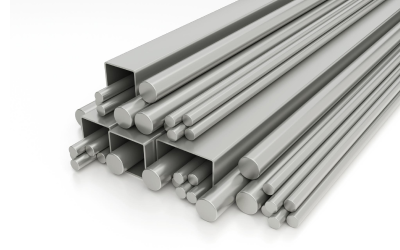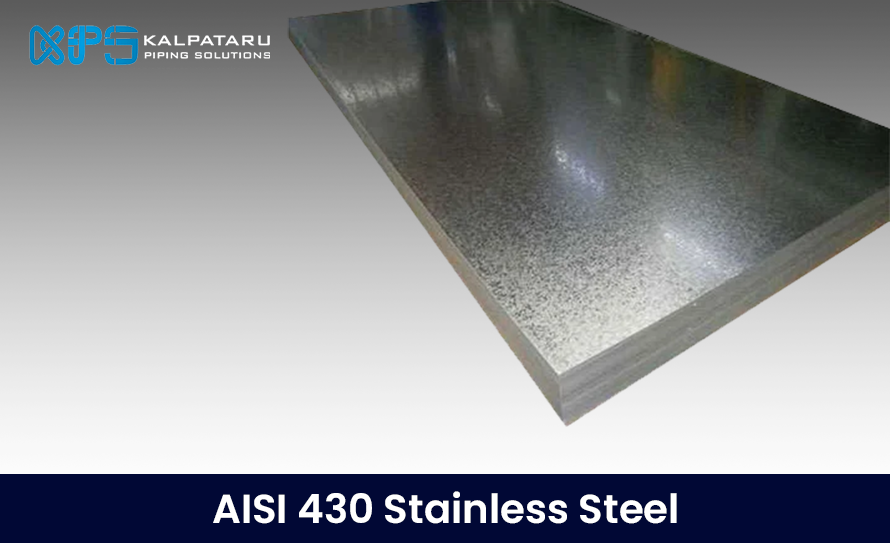Alloy steel is a mix of iron and carbon, up to 2%. It’s crucial in industries like construction and manufacturing. Adding other elements, like chromium or nickel, improves its properties. Alloying can make “low-alloy” steel (less than 10% added elements) or “high-alloy” steel (more than 10%). Low-alloy steel is common when people talk about “alloy steel.”
What is Alloy Steel?
Alloy steel is a type of steel that includes additional elements mixed with carbon and iron to enhance its properties. The added elements, which can make up 1% to 50% of the alloy by weight, improve qualities like strength, hardness, and resistance to wear and corrosion. This makes alloy steel versatile and useful in many applications.
Composition of Alloy Steel
Alloy steel consists primarily of iron and carbon. To create alloy steel, other elements like manganese, nickel, chromium, molybdenum, vanadium, silicon, and boron are added. These elements can improve various properties of the steel, such as:
| Element | Effect on Steel |
| Chromium | Enhances toughness and corrosion resistance |
| Nickel | Improves strength and toughness |
| Molybdenum | Increases strength and hardenability |
| Vanadium | Increases strength and wear resistance |
| Silicon | Improves strength and elasticity |
| Boron | Increases hardenability and tensile strength |
Types of Alloy Steel
There are several subcategories of alloy steel, including:
- High-strength low alloy (HSLA) steel
- Stainless steel
- Microalloyed steel
- Low alloy steel
- Advanced high-strength steel (AHSS)
- Maraging steel
Alloy Steel Properties
Alloy steels can have a variety of properties depending on the elements added:
- Improved Mechanical Properties: Enhanced strength, toughness, and wear resistance.
- Enhanced Corrosion Resistance: Increased resistance to rust and oxidation.
- Better Heat Resistance: Ability to withstand high temperatures without degrading.
Applications of Alloy Steel
Alloy steel is used in many applications due to its different types and enhanced properties. Here’s an overview:
Low Alloy Steels
Low alloy steels are known for their high strength, machinability, affordability, and availability. These features make them suitable for a wide range of industries:
- Ships: Used in hulls and structural parts.
- Pipelines: Ideal for transporting oil, gas, and other fluids.
- Pressure Vessels: Used in containers holding gases or liquids at high pressures.
- Oil Drilling Platforms: Essential for offshore drilling structures.
- Military Vehicles: Applied in tanks and armored vehicles.
- Construction Equipment: Used in heavy machinery like bulldozers and cranes.
- Structural Elements: Utilized in bridges, buildings, and other infrastructure.
- Examples: HY80, HY100
High-Alloy Steels
High-alloy steels are more expensive and harder to work with but offer superior hardness, toughness, and corrosion resistance. They are ideal for:
- Structural Components: Used in the construction of buildings and bridges.
- Automotive Applications: Essential for engine parts, gears, and bearings.
- Chemical Processing: Used in equipment handling corrosive substances.
- Power Generation Equipment: Applied in turbines and nuclear reactors due to their high-temperature stability.
- Examples: HE, HF, HH, HI, HK, HL
Difference Between Low Alloy Steel and High Alloy Steel
| Feature | Low Alloy Steel | High Alloy Steel |
| Alloying Element Percentage | Less than 0.2% | More than 5% |
| Common Alloying Elements | Ni, Cr, Mo, V, B, W, Cu | Chromium, Nickel |
| Mechanical Properties | Enhanced compared to carbon steel | Superior hardness, toughness, and corrosion resistance |
| Corrosion Resistance | Improved compared to carbon steel | Excellent, often forms a protective oxide layer |
| Temperature Suitability | Suitable for temperatures lower than 580°C | Can withstand higher temperatures |
| Common Examples | HY80, HY100 | Stainless Steel (e.g., 304, 316 grades) |
| Cost | Generally less expensive | More expensive due to higher alloy content |
| Typical Uses | Ships, pipelines, pressure vessels, construction equipment | Chemical processing, automotive parts, power generation |
| Heat Treatment | Often includes quenching and tempering | Frequently used to enhance properties further |
| Weldability | Good, but may require pre- or post-weld treatments | Generally good, some high-alloy steels may need special care |
Alloy steel’s versatility and enhanced properties make it essential across various industries, providing solutions that require high strength, durability, and resistance to extreme conditions.
Examples of Alloy Steel Products
- Alloy steel fasteners
- Alloy steel flanges
- Alloy steel plates, sheets, and coils
- Alloy steel bars, rods, and wires
- Alloy steel forged fittings and buttweld fittings
Alloy Steel in Piping
Alloy steel pipes are crucial in industries due to their durability, strength, and resistance to extreme temperatures and corrosion. They are made using elements like chromium and nickel to ensure long-lasting performance in harsh environments.
By combining carbon steel with various elements, alloy steel can be tailored to meet specific requirements, making it a vital material across numerous industries.
What is the basic composition of steel?
Steel is primarily made of iron and carbon. Mild steel, or carbon steel, typically contains more than 99% iron and less than 0.25% carbon. Additionally, it includes small amounts of manganese, phosphorus, and sulfur. These elements help create various grades of steel with different properties.




